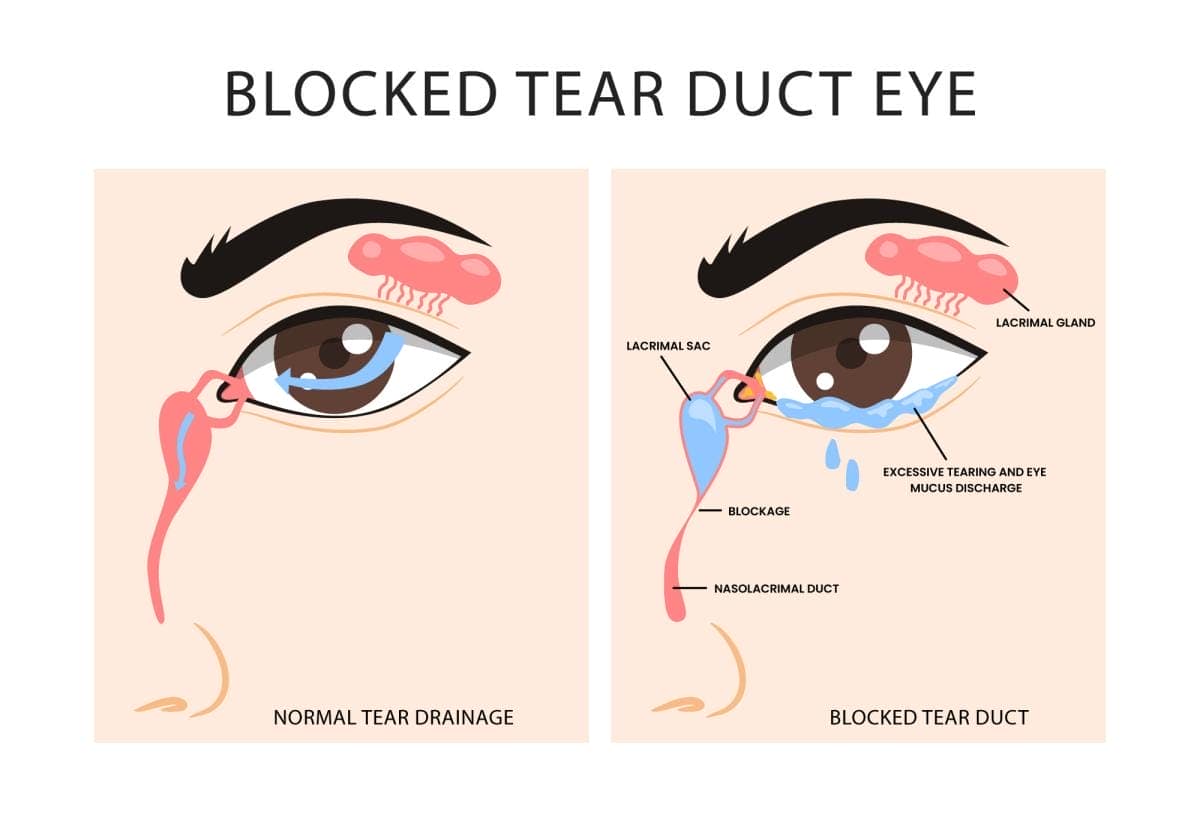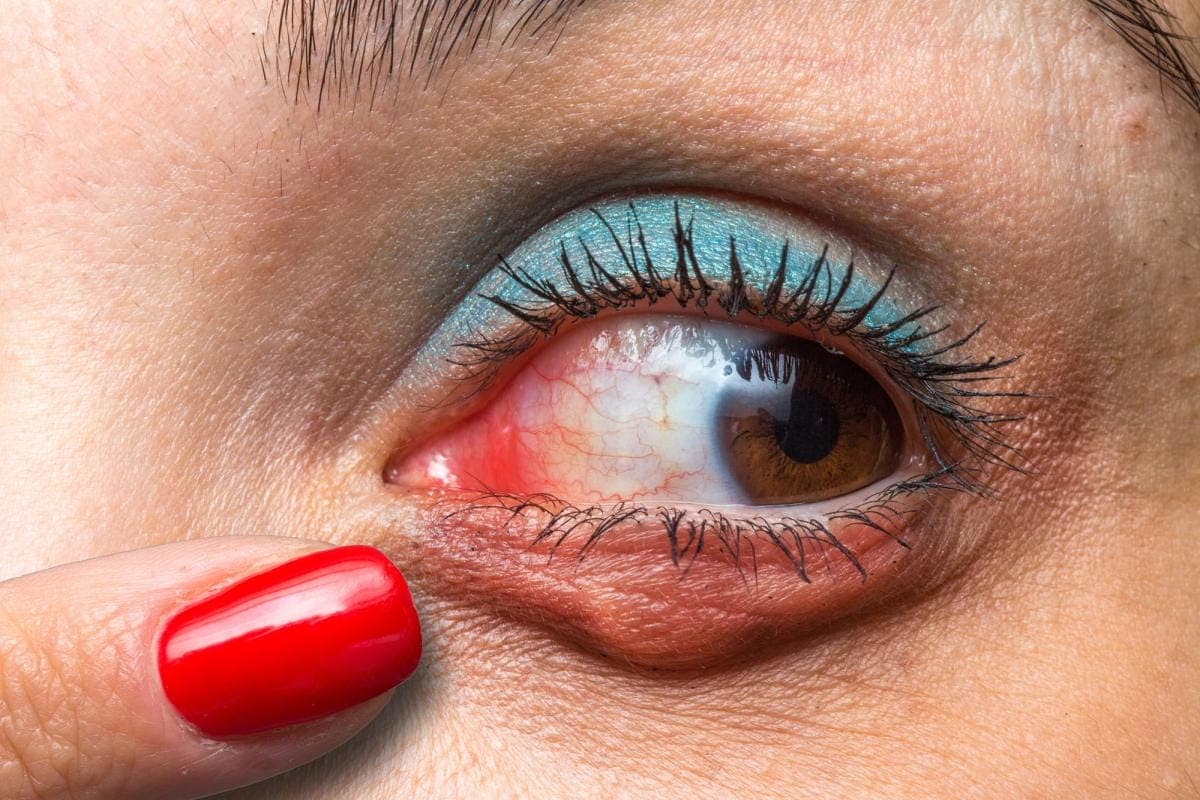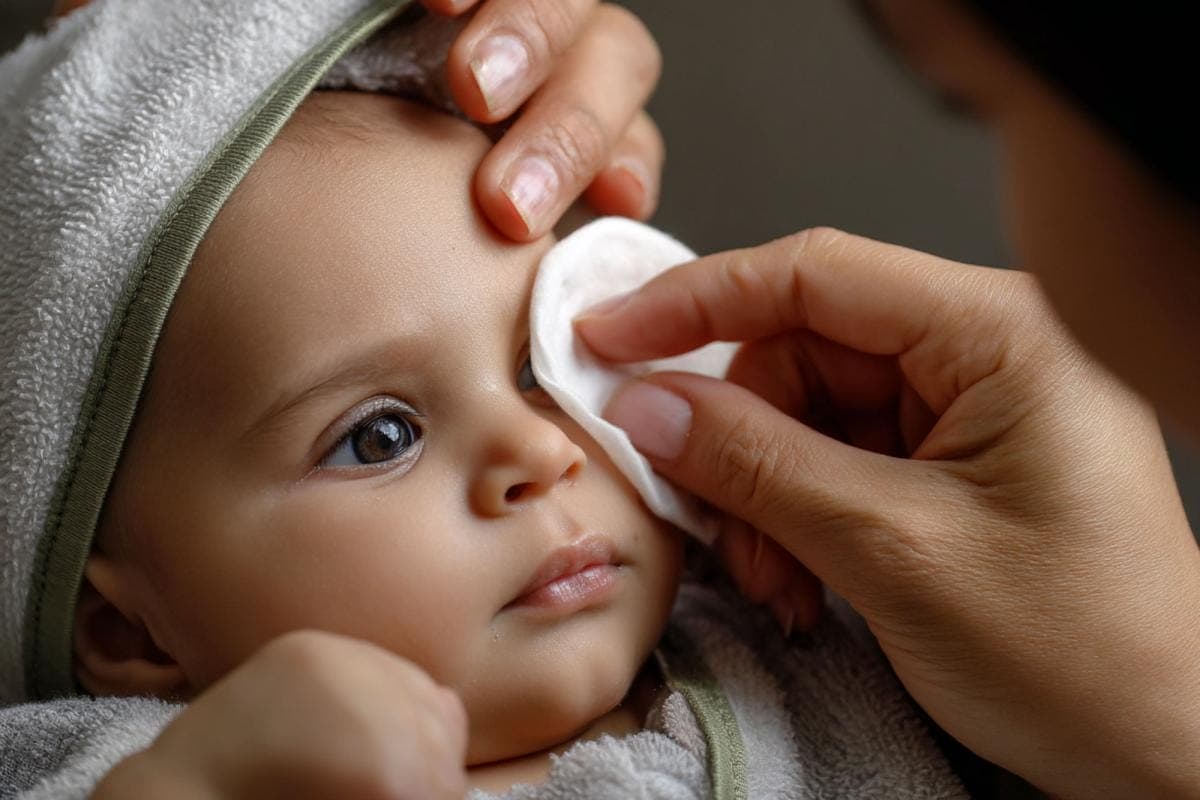Wellness
Stuck Tears and Swollen Lids: How to Treat Clogged Tear Ducts and Sties Safely
If you click on links we provide, we may receive compensation.
The eye is a small, sensitive organ, but when something goes wrong, even a minor blockage can turn daily life upside down. Few things make you more aware of your eyelids than a sore, red bump or the nagging discomfort of watery, irritated eyes. Clogged tear ducts and sties are two common culprits behind these symptoms, and if you’ve ever woken up with a swollen eyelid or struggled to clear away endless tearing, you know how disruptive these tiny issues can be.
You aren’t alone. According to the American Academy of Ophthalmology, millions of people deal with blocked tear ducts or sties every year. Children, adults, and even newborns can find themselves on the wrong end of an angry eyelid or a streaming eye. The good news? Most cases resolve at home with gentle, practical care. But knowing when—and how—to treat them makes all the difference between quick recovery and lingering problems.
I’ve spent plenty of time nursing my own eye troubles. Like most people, I once panicked at the first sign of a red bump, imagining worst-case scenarios. After years of advice from doctors and far too many warm compresses, I know what works and what doesn’t. Here’s what you should know if you—or someone you love—are dealing with a blocked tear duct or a stye.
What’s Actually Happening: A Quick Breakdown
Your eyes rely on a delicate system to keep tears flowing and debris at bay. Tears wash across the eye, then drain out through tiny ducts at the corner of your eyelids. If those ducts get blocked, tears back up. Suddenly you’re wiping at your eyes all day, and your vision can blur from the overflow.
A stye, meanwhile, is a bump that forms along the edge or inside of your eyelid. It usually starts when oil glands (called meibomian glands) get clogged and bacteria move in. Redness, swelling, and a classic “pimple on the eyelid” look soon follow. Both conditions are uncomfortable—but not usually dangerous.
How to Spot the Difference
Knowing what you’re dealing with helps you choose the right treatment. Blocked tear ducts usually cause watery eyes. You might notice discharge, crusting, or even swelling at the inner corner of your eyelid. Sties are more focused: they start as a tender bump, then swell and become red. They may fill with pus or look like a tiny pimple.
Sometimes, a blocked tear duct and a stye can show up together or one after the other. Both can happen after a bad cold, allergies, or even just rubbing your eyes with dirty hands. It’s common for newborns to have blocked tear ducts—their ducts just aren’t fully open yet. Adults get sties more often, especially if they have blepharitis (inflammation of the eyelid) or wear makeup overnight.

Treating Clogged Tear Ducts at Home
If your eyes are watering, sticky, or a bit swollen, chances are you’re dealing with a blocked tear duct. Here’s how to manage it:
Warm Compresses Really Work
Heat is your friend. Soak a clean washcloth in warm (not hot) water, wring it out, and gently press it over your closed eyelid for 5 to 10 minutes, several times a day. This helps loosen any dried material and encourages the duct to open. For newborns, the warmth can soften the blockage and help clear it faster.
Gentle Massage Can Help
After using a warm compress, gently massage the area between the inner corner of your eye and your nose using a clean fingertip. Use light pressure and move in a downward motion—think of trying to “milk” the blockage toward the duct’s opening. Never use force and stop if it hurts.
Keep the Area Clean
Wipe away discharge with a clean, damp cotton pad. Avoid using harsh soaps or rubbing alcohol near your eye. For babies, use boiled (then cooled) water and a fresh pad each time.
Avoid Eye Drops Unless Prescribed
Many people reach for over-the-counter drops, but most are designed for allergies or redness—not for blocked ducts. If there’s no sign of infection, simple cleaning is usually enough. Antibiotic drops or ointment should only be used if your doctor suspects an infection.

When to See a Doctor
If symptoms last more than a week, the area becomes very red or painful, or you notice green or yellow pus, it’s time for medical help. You should also see a doctor if your vision changes, you have fever, or the swelling spreads beyond the eyelid. In rare cases, untreated blockages can lead to more serious infections.
Doctors may flush the duct, prescribe antibiotic drops, or in stubborn cases, recommend a minor procedure to open the duct. For adults, persistent blockages sometimes need surgical intervention, but that’s uncommon.
Dealing With Sties: What to Do (and Not Do)
A stye looks worse than it feels, but the throbbing, tender bump is hard to ignore. Fortunately, most sties are self-limited. Here’s the right way to get rid of one:
Again, Warm Compresses Are Key
The tried-and-true treatment for sties is also heat. Place a warm, wet washcloth over the affected eyelid for 10-15 minutes, three to four times a day. This encourages the stye to drain naturally and speeds healing. Refresh the cloth with warm water as needed to keep it comfortably hot.
Don’t Squeeze or Pop It
No matter how tempting it is to pop a stye, resist the urge. Squeezing can force bacteria deeper into the eyelid, cause more swelling, or even lead to a more serious infection (like cellulitis). Let nature take its course.
Skip Eye Makeup and Contact Lenses
Until the stye is gone, go makeup-free and wear glasses instead of contacts. Cosmetics and contact lenses can introduce more bacteria or irritate the stye further. Replace any eye makeup you used before the stye appeared—mascara wands and eyeliner tips are notorious for harboring germs.
Keep Your Hands Clean
Every time you touch your eye, you risk spreading bacteria. Wash your hands before applying compresses, massaging, or cleaning the eyelid. Don’t share towels, pillowcases, or washcloths with others while you have a stye.
Over-the-Counter Pain Relief
If the stye is tender, you can take acetaminophen or ibuprofen to ease discomfort. Avoid aspirin in children and teens unless recommended by a doctor.

When to Seek Medical Care
Most sties resolve within a week. But if the swelling spreads beyond your eyelid, you develop a fever, vision changes, or the stye doesn’t improve after 10 days, it’s time to see a doctor. Large, persistent sties may need to be drained by an eye specialist. Sometimes an antibiotic ointment or oral antibiotic is prescribed if there’s evidence of infection.
Why Good Hygiene Makes a Difference
It sounds basic, but regular eyelid hygiene can help prevent both blocked tear ducts and sties. Simple steps, like removing eye makeup before bed and washing your hands before touching your eyes, go a long way.
If you’re prone to eyelid irritation or recurring sties, consider washing your eyelids with a gentle cleanser (some are specially made for the eyes) or a diluted baby shampoo. Use a clean cotton swab and rinse with warm water.
Complications to Watch For
While most cases are minor, there are some complications that deserve serious attention:
- Dacryocystitis is a deeper infection of the tear duct. Symptoms include severe redness, swelling, pain near the nose, and pus discharge. This is a medical emergency and requires antibiotics.
- Chalazion is a painless lump that can follow a stye, caused by lingering blockage in the oil gland. It usually feels firmer than a stye and takes longer to go away. Most chalazia resolve on their own, but persistent or bothersome ones may need to be removed by a doctor.
- Cellulitis is a spreading infection in the skin around the eye. Swelling, warmth, redness, and fever are classic signs. Immediate medical attention is needed, as it can threaten vision if left untreated.
- Vision Changes are rare but important. If you ever notice double vision, vision loss, or trouble moving your eye, get medical help right away.
Why Some People Get Clogged Ducts and Sties Over and Over
You might wonder why some people (or kids) seem to get these issues repeatedly. For infants, it’s often just a matter of anatomy—about 6 percent of newborns have a blocked duct that almost always resolves as they grow, according to the American Academy of Pediatrics. For adults, risk factors include:
- Chronic eyelid inflammation (blepharitis)
- Rosacea
- Using old or contaminated eye makeup
- Not removing eye makeup before bed
- Poor contact lens hygiene
- Exposure to dust or allergens
If you get frequent sties or blockages, talk to your eye doctor. Sometimes, underlying skin conditions or minor anatomical differences are to blame.
Safe Remedies and What to Avoid
If you search online for “how to treat a stye” or “clogged tear duct home remedies,” you’ll find no shortage of dubious advice. Some tips can actually make things worse. Here’s what works—and what doesn’t.
Safe:
- Warm compresses with clean washcloths
- Gentle massage after heating
- Keeping the area clean with boiled water or saline
- Replacing old eye makeup and regularly washing pillowcases
- Over-the-counter pain relievers for discomfort
Avoid:
- Squeezing or trying to pop a stye
- Using harsh chemicals or undiluted essential oils on the eyelid
- Applying makeup or contact lenses until healed
- Sharing towels or cosmetics
- Using expired eye drops or ointments
It’s best to stick to evidence-based remedies and check with your doctor if you’re unsure.
How Doctors Treat Tough Cases
While most people can manage blocked ducts and sties at home, stubborn cases sometimes need extra help. Your eye doctor has several options:
For Blocked Tear Ducts:
- Flushing the duct with sterile saline (usually painless and quick)
- Prescribing antibiotic drops or ointment for infections
- Probing the duct (especially in infants) to open a persistent blockage
- Balloon dilation or stenting for adult blockages
- Surgery in rare, severe cases
For Sties:
- Draining large or persistent sties in the office with local anesthetic
- Topical or oral antibiotics if the stye is infected or spreading
- Steroid injections for particularly inflamed sties (rarely needed)
- Removing recurring chalazia surgically
Doctors may take a sample of pus for lab analysis if infections keep recurring, to rule out uncommon bacteria or underlying conditions.
Kids and Babies: A Special Note
Blocked tear ducts are especially common in infants. Most clear up by age one without intervention, but parents should still know the signs of infection and keep the area clean. If an infant’s eye becomes red, swollen, or oozes pus, see a pediatrician right away. Sometimes, doctors recommend a simple procedure to open the duct if the blockage persists past the first year.
For kids and adults with recurrent sties, a checkup with a pediatrician or eye specialist is a good idea. They may suggest eyelid scrubs or prescribe an ointment to prevent new bumps from forming.
Preventing Recurrence: What You Can Control
Most sties and blockages can’t be prevented entirely, but good habits help. Here’s what makes a difference:
- Always remove makeup before sleep
- Wash hands before touching your face or eyes
- Replace mascara and eyeliner every three months
- Don’t share eye makeup or face towels
- Avoid rubbing your eyes, especially with unwashed hands
- Keep eyelids clean, especially if you have a history of blepharitis or rosacea
- Manage allergies to cut down on eye rubbing
A 2022 CDC survey found that 45 percent of contact lens users admitted to not replacing their lenses as recommended—a major risk factor for eye infections and sties (https://www.cdc.gov/contactlenses/protect-your-eyes.html). Small daily habits can make all the difference.
FAQs About Blocked Tear Ducts and Sties
How long does a stye last?
Most sties go away on their own within 7 to 10 days with home care.
Can I wear contacts with a stye or blocked duct?
No. Stick with glasses until your eye is fully healed to avoid spreading bacteria.
Are sties contagious?
They aren’t highly contagious, but the bacteria that cause them can spread. Don’t share towels, pillowcases, or eye makeup.
My child has a blocked tear duct. Should I be worried?
Most infant blocked ducts resolve by age one. Keep the area clean and watch for infection. See a doctor if symptoms persist or worsen.
Is it okay to use antibiotic ointment without a prescription?
No. Use only medications recommended by your doctor to avoid resistance and side effects.
How do I know if my blocked duct or stye is infected?
Signs include increasing redness, pain, swelling, pus, or fever. Seek medical care promptly.
What if the problem keeps coming back?
See an eye doctor for a full evaluation. Chronic blockages or sties can signal other conditions that need treatment.
The Bottom Line
Blocked tear ducts and sties are common but rarely dangerous. With warm compresses, careful cleaning, and a little patience, most people recover quickly. The key is knowing when home remedies are enough and when to call in the pros. When in doubt, protect your eyes and see a doctor—you only get two, and they deserve good care.




